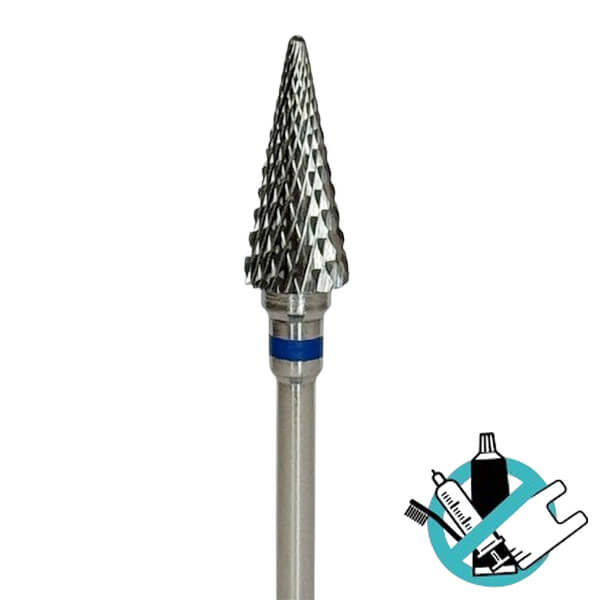
Tungsten Carbide PM Cross-Cut Bur in Pine Shape - VIDU
Laboratory bur in pine shape:
- Plastic Neutral. Plastic footprint = 0 gr. *Certified by rePurpose..
- Tungsten carbide bur for use in dental laboratory.
- For handpiece.
- Cross-cut.
- Diameter of 060.
- Medium thickness.
 You have 15 days for free return.
You have 15 days for free return.Laboratory bur in pine shape:
- Plastic Neutral. Plastic footprint = 0 gr. *Certified by rePurpose..
- Tungsten carbide bur for use in dental laboratory.
- For handpiece.
- Cross-cut.
- Diameter of 060.
- Medium thickness.
Description
The tungsten carbide burs from Vidu provide precise and effective material removal, leaving a smooth surface.
Features of the Tungsten Carbide PM Cross-Cut Bur in Pine Shape:
- Tungsten carbide bur for use in dental laboratory.
- For handpiece.
- Cross-cut.
- Diameter of 060.
- Medium thickness.
TUNGSTEN CARBIDE BURS FOR VIDU LABORATORY · PLASTIC NEUTRAL CERTIFIED · ZERO PLASTIC FOOTPRINT
The burs are part of the specific hospital waste group IV, materials that cannot be recycled unless incinerated, for hygienic, sanitary reasons, and due to their use, it is difficult to find an alternative made of another material. VIDU works to always offer the most responsible solution and, while maintaining the necessary hygienic qualities in the clinic, always seeks a balance between fair price and caring for the planet.
Environmental impact measures >> Plastic footprint of VIDU clamps = 0 gr.
- Weight of plastic used = 0 gr.
- Weight of plastic collected = 0 gr.
- Type of collection: Normal.
- Location: Colombia
- Data for each VIDU bur.
- Certified by RePurpose.
- Learn more.

LET´S BE PART OF THE CHANGE!
- Plastic Neutral. Certified by RePurpose.
- Packaging 100% reciclable. In the packaging of the burs, recyclable materials have been primarily used, always ensuring the highest quality and hygiene standards in the products.
- Fair price. By achieving a fair and reasonable price, the aim is to always offer the least polluting and most easily recyclable solution possible, ensuring the highest quality and hygiene standards in the products.
- Online distribution. The marketing of these products is carried out via the internet, thus avoiding unnecessary transportation and pollution.
- Responsible consumption. Do not use more burs than necessary!

How to manage the waste generated in the clinic with the use of burs?
- How to recycle strawberries?
- Once you have accumulated a sufficient amount, deposit it in the nearest recycling container.
Strawberries are sterilizable products and of various uses; unfortunately, at the end of their useful life, they cannot be recycled, as they are a product of mandatory incineration that belongs to group IV of sharp and pointed material waste. VIDU is working on developing alternatives and new recycling channels for waste generated in clinics.
Where do VIDU strawberries come from?
One of the brand's objectives is transparency, so the packaging of all products always specifies the country of origin. It will vary from one product to another, always seeking manufacturing conditions that ensure: Quality, sustainability, and fair price.
In the case of strawberries, their manufacturing is in China.
Questions and answers
There are no questions yet. Be the first to ask one!
You need to be logged in to ask questions. Login


